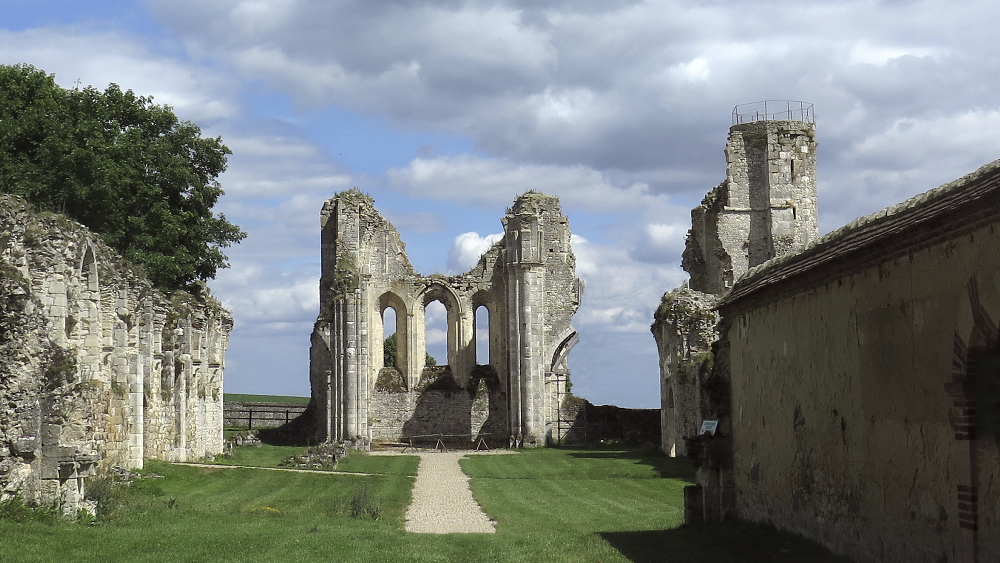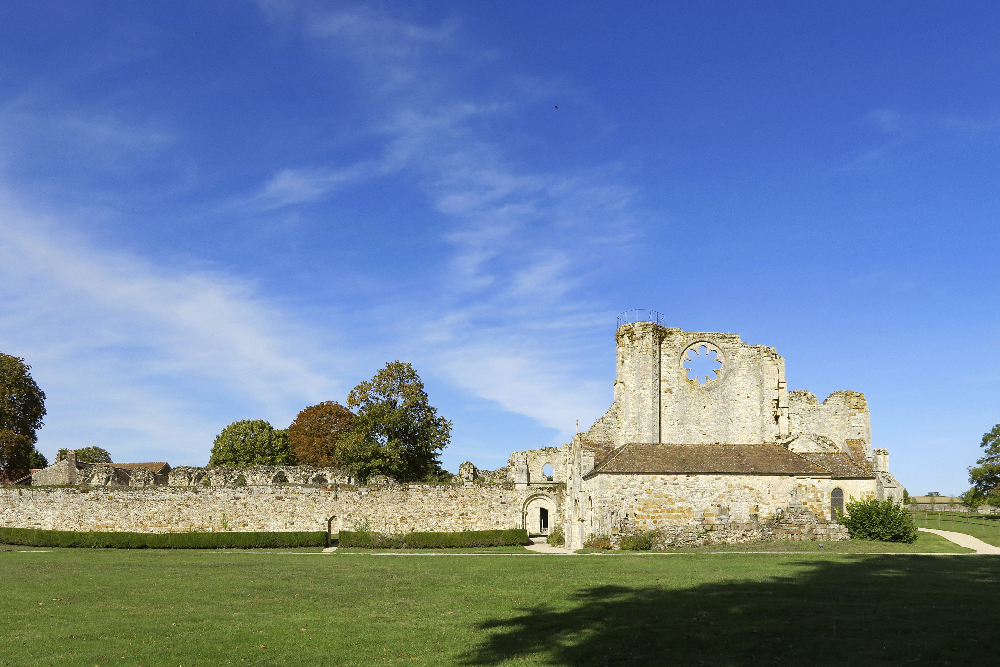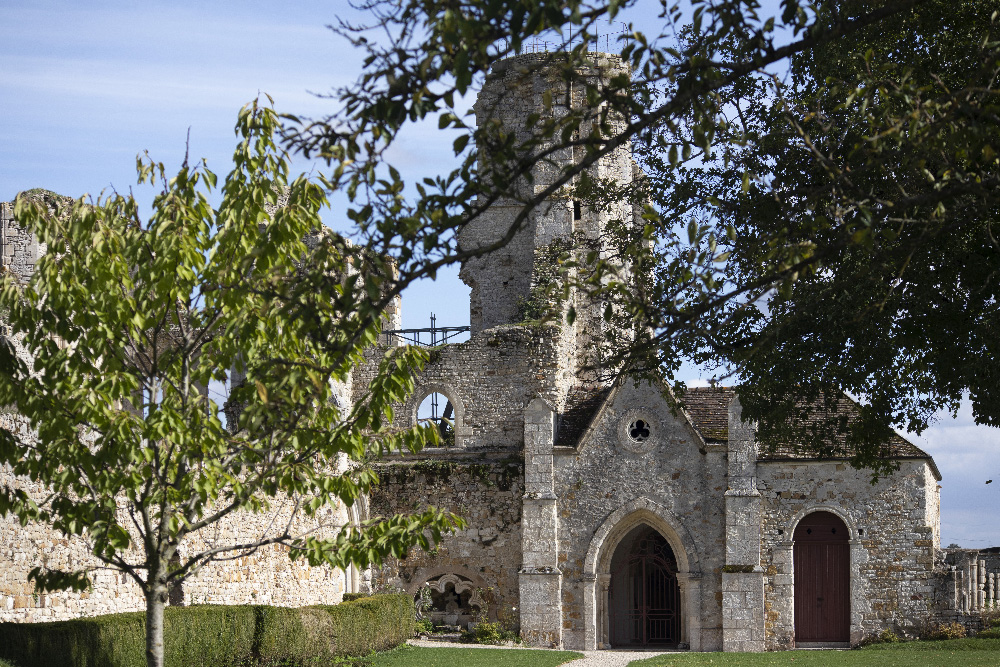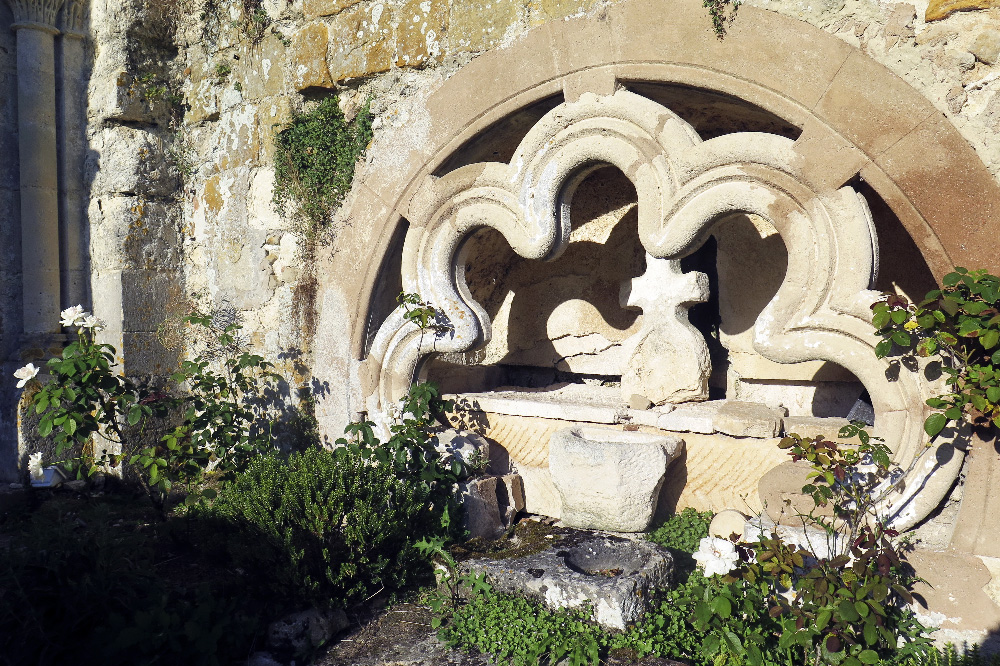Notice on the foundation and history of Preuilly abbey
The foundation of the Cistercian abbey of Preuilly dates, as related in historical documents, to 1118. Among the many “daughter” abbeys of Cîteaux, Preuilly is the fifth, following the four great ones: La Ferté (1113), Pontigny (1114), Clairvaux, and Morimond (1115).
At that time, Saint Stephen, the third abbot of Cîteaux, structured the expanding Cistercian Order with a charter, the Carta Caritatis (Charter of Charity), which established the relationships between Cîteaux and its daughter abbeys through a delicate balance between centralization and autonomy.
A few monks from Cîteaux settled in Preuilly under the leadership of Artaud, the first abbot of Preuilly, who was a companion and friend of the future Saint Bernard, himself the first abbot of Clairvaux. The lands had been purchased from Holdevin d’Égligny by the Count of Champagne, Thibaut the Great, and his mother, Adèle, daughter of William the Conqueror, to be donated to the young monastic community.
The new monastery took firm root and expanded thanks to various donations and bequests. It soon became a vast estate, primarily agricultural, operated with the help of lay brothers (conversi) in various forms (farms or granges, mills, tile works, etc.) on surrounding sites, some a day’s walk or more from Preuilly. The monks also had Preuilly guesthouses in Provins, Sens, Auxerre, and even Paris, in the Marais district.
The prosperity of the abbey was evident in the construction of monastic buildings, particularly the abbey church, which was 85 meters long and likely built in the late 12th century, magnificently replacing the modest oratory of its early years.

Thanks to the vitality of its community, Preuilly, in turn, gave rise to three daughter abbeys: Vauluisant in 1127, then Sacré-Port in 1145 (later known as Barbeau), and finally La Colombe in 1146.
In the 13th century, prosperity seems to have led to some laxness of discipline, as Pope Gregory IX, in 1238, condemned certain Preuilly monks who had abandoned their monastic habit and returned “like dogs” to worldly life.
The 14th and 15th centuries were marked by various acts of pillaging and warfare, especially during the Hundred Years’ War, despite King Charles V granting the monks permission to maintain a fortified post for their protection at a place called La Pescherie, near Égligny.
However, fervor was rekindled both inside and outside the monastery. In 1455, the General Chapter of Cîteaux reported miracles occurring at Preuilly, attracting more and more pilgrims to its church, which, like all Cistercian churches, was dedicated to Our Lady. The growing influx of pilgrims eventually disrupted monastic life, leading to the relocation of the revered statue of the Virgin in 1687 to the hollow of a large oak tree in the forest of Preuilly, over a kilometer away from the cloister’s silence.
This event marked the beginning of the enduring devotion to Notre-Dame du Chêne (Our Lady of the Oak) and the annual pilgrimage, which continues today between the site known as Le Chêne and the ruins of the abbey except for the hiatus from 1789 to 1866 following the French Revolution.
Meanwhile, in 1536, the abbey’s governance changed, as in many other monasteries. The position of abbot, once “regular” (meaning elected by the community), became “commendatory,” meaning it was appointed by secular authorities, often leading to deviations in both the spiritual and material life of the abbey. Although the number of monks increased from 15 to 26, according to a document from 1560, the monastery declined, particularly due to the Wars of Religion, further pillaging, and even a fire caused by lightning which struck the bell tower in 1634.
At the beginning of the 18th century, major renovation works were undertaken on the church, cloister, and adjacent buildings. In 1715, the Abbot of Cîteaux himself solemnly consecrated the new high altar and the five transept chapels, dedicated to Saint Donatus, Saint Benedict, the Holy Virgin, Saint Bernard, and Saint Peter.
However, like many other monasteries, Preuilly suffered destruction during the French Revolution. The last ten monks were dispersed on November 25, 1790. The conventual buildings and the church were declared “national property” and put up for auction on April 28, 1791, in several lots. These were acquired by different buyers and, over the years, resold to various owners, including Maret, the future Duke of Bassano and private secretary to Napoleon. Meanwhile, demolition continued.
At this point, Dr. Henri-Marie Husson and his wife, Zoé Odiot (daughter of the Parisian goldsmith), intervened. A physician at the Hôtel-Dieu in Paris, a promoter of smallpox vaccination in France, and president of the Academy of Medicine, Dr. Husson gradually repurchased, between 1829 and 1842, the various lots of the dismantled monastery, restoring its former unity. His son, Georges, acquired the final piece—the abbot’s residence—in 1866. The demolitions were halted, and the family devoted itself to preserving the remains of the former abbey.
With few changes, these ruins remain as you see them today.

The main surviving structures include the sanctuary walls of the church, up to the base of the rib vaults, with a flat chevet featuring three open bays, the lateral walls of the nave, the southern transept arm with a beautiful eight-lobed rose window, and the remains of the chapter house, where two columns with feuilles d’eau (waterleaf) capitals still stand.
Around 1860, a chapel was arranged within what was once the abbot’s chapel, the church sacristy, and the armarium (monastic library).

Of the cloister, nothing remains except the beautiful northeast corner doorway leading into the church and, beside it, the enfeu (arched tomb recess), as the burial site of Artaud, the first abbot of Preuilly.

Among the farm buildings that are still in use, the most remarkable are the Domaine farm to the north and, even more so, the Beauvais grange (barn) to the southwest.
The Beauvais grange is currently the subject of a study as part of ongoing research aimed at better understanding the highly effective and exemplary Cistercian economy, which was developed throughout Europe by these monks—early European pioneers—who so skillfully combined prayer and labor, in accordance with the precept Ora et labora (“Pray and work”), which structured their daily lives.
Like many other Cistercian sites, Preuilly Abbey is a member of the European Charter of Cistercian Abbeys and Sites.
Preuilly Abbey was classified as a Historic Monument in 2004. It is open to the public on Heritage Day and on the fourth Sunday of September for the annual Notre-Dame du Chêne pilgrimage.
We also welcome, depending on the availability of our volunteer guides - groups who request a visit in advance by email at info@abbayedepreuilly.fr.
Dr Yves Husson - Preuilly - 2014
